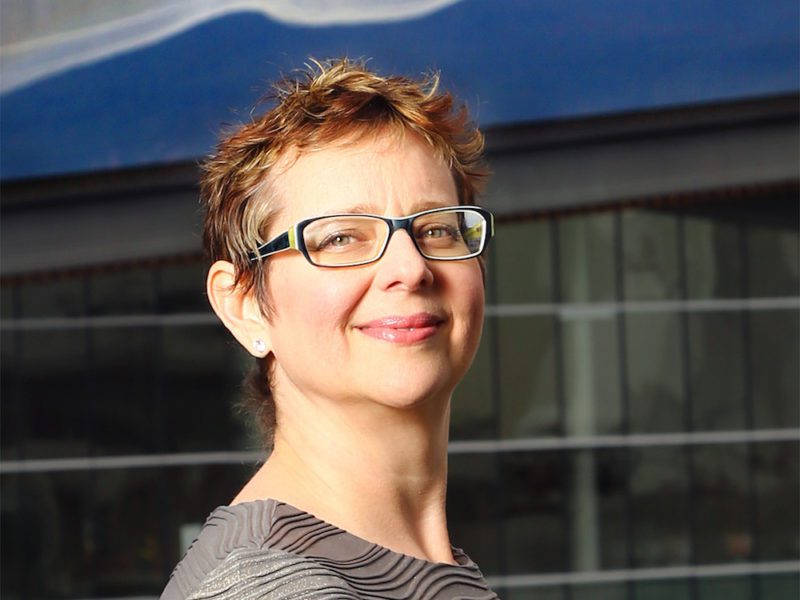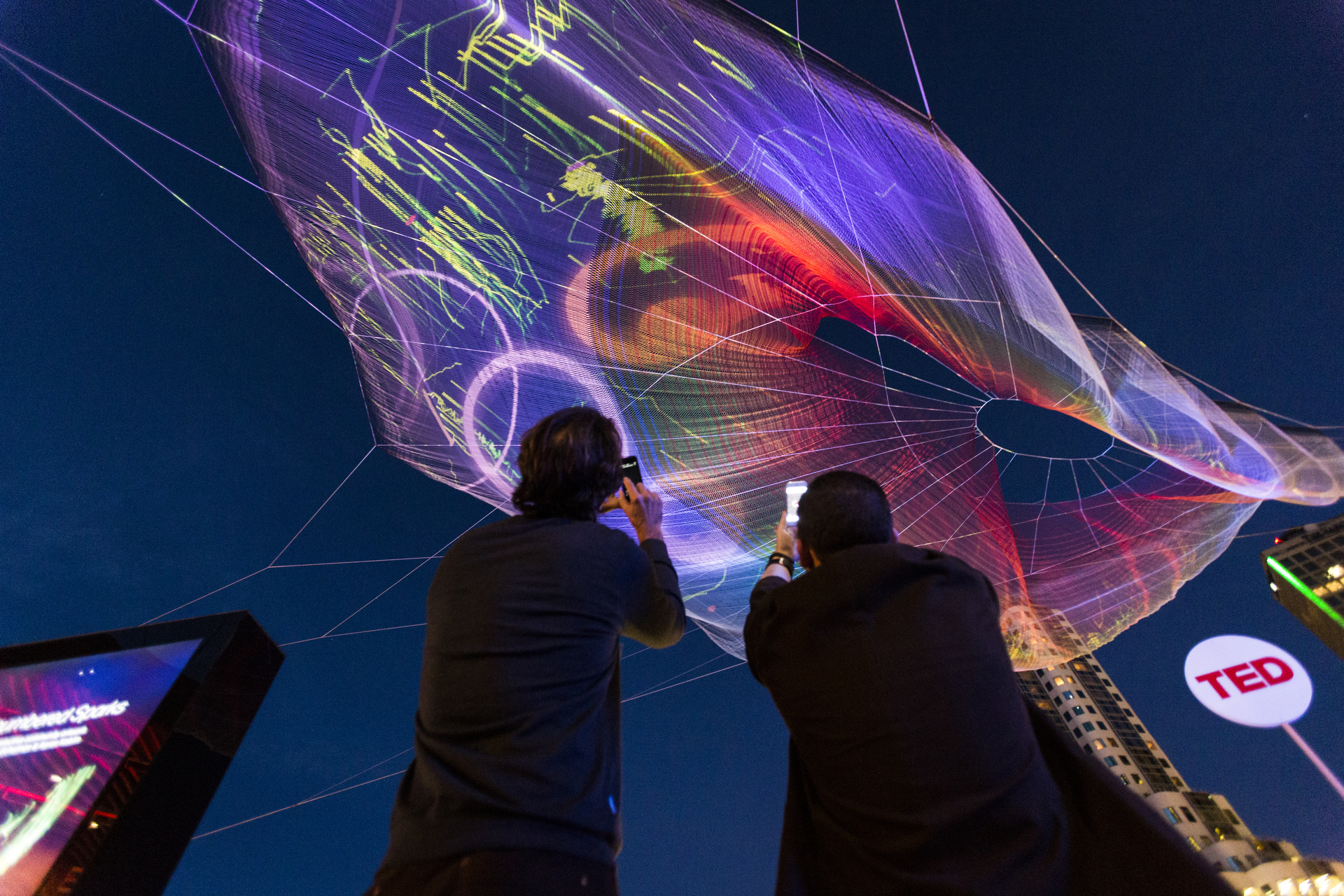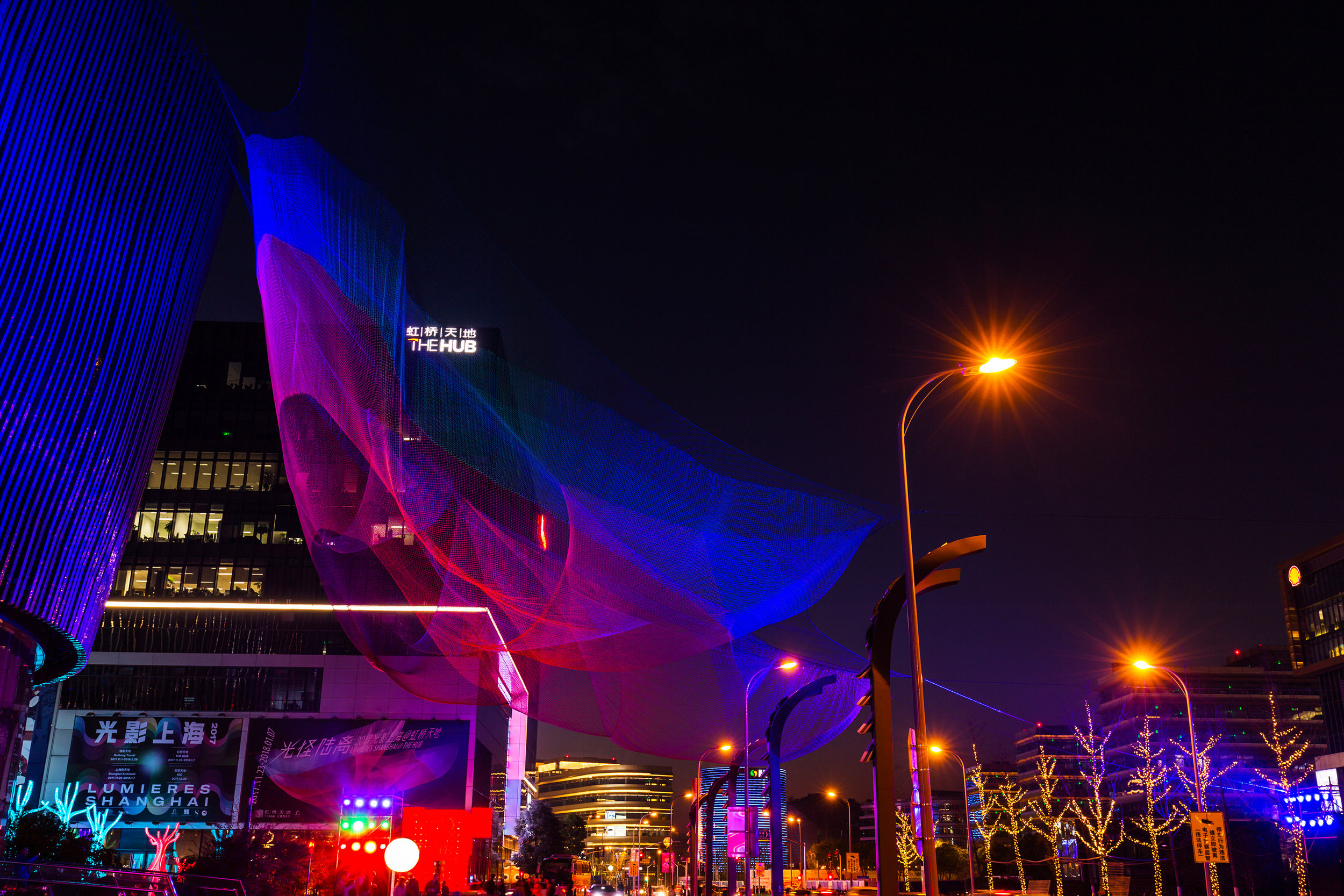
Janet Echelman is a sculptor famous for her large-scale installations.
Interestingly, this was not her first career choice. Echelman initially set out to be a painter; but when she traveled to India doing exhibitions for the US Embassy, her painting equipment never arrived. She tried working with bronze casters but found that the material was heavy to work with and too expensive for her budget. After looking at the local surroundings, she drew inspiration for her first sculptures from fishing nets. Echelman realized she could make volumetric form without using solid, heavy materials.
BELLBOTTOMS SERIES, MAHABALLIPURAM, INDIA, 1997

One of the four sculptures Echelman made with nets during her time in India as a Fulbright Scholar.
Her projects are usually created with fibers along with the help of digital software. For the installation she did in Canada, 2014, Echelman collaborated with Autodesk to create a custom 3D software to model the sculpture and test it. Because the sculpture is large and complex (the net is 300 ft long), the use of digital software enabled her to explore density, shape, and scale.
SKIES PAINTED WITH UNNUMBERED SPARKS, VANCOUVER, CANADA, 2014
 A large interactive work made up of 860,000 hand and machine-made knots and 145 miles of braided fiber weighing almost 3,500 pounds. At night, visitors could control the lighting in real time using their mobile devices. Echelman wanted visitors to feel more connected to others around them.
A large interactive work made up of 860,000 hand and machine-made knots and 145 miles of braided fiber weighing almost 3,500 pounds. At night, visitors could control the lighting in real time using their mobile devices. Echelman wanted visitors to feel more connected to others around them.
A common theme in Echelman’s work is embracing change. Her goal is to turn sculptures from “an object you look at, into an experience you can get lost in”. She wants viewers to experience artwork that is always changing in response to wind and light. This concept of change is also present in many of her pieces, and is often used to amplify the contexts of the installations.

The concept of this sculpture is based on scientific data sets from the 2010 Chilean earthquake and tsunami. The form of the sculpture was created from data that measured the effects of the earthquake including tsunami wave heights. It is made up of ultra high molecular weight polyethylene, which is 15 times stronger than steel but still lightweight enough to move along with the wind.
PULSE, PHILADELPHIA, PA GREEN LINE PHASE, 2018
 A permanent installation that was inspired by the site’s historic associations with water and transportation. The fountain traces the paths of the subway and trolley lines that intersect beneath the park. As trains go by, four-ft-tall curtains of atomized mist burst from the fountain.
A permanent installation that was inspired by the site’s historic associations with water and transportation. The fountain traces the paths of the subway and trolley lines that intersect beneath the park. As trains go by, four-ft-tall curtains of atomized mist burst from the fountain.